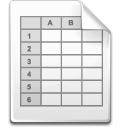Original data for article: Particle balance and return loops for microplastics in a tertiary-level wastewater treatment plant
Downloads:
Authors
Date
2020Copyright
© Pauliina Salmi, Kalle Ryymin, Anna K. Karjalainen, Anna Mikola, Emilia Uurasjärvi, Julia Talvitie and University of Jyväskylä
Microplastics (MPs) from households, stormwaters and various industries are transported to wastewater treatment plants (WWTPs) where a high proportion of them are captured before discharging their residuals to watersheds. Although recent studies have indicated that the removed MPs are mainly retained in wastewater sludge, sludge treatment processes have gained less attention in MP research compared to water streams at primary, secondary and tertiary treatments. In this study, we sampled twelve different phases in a tertiary-level municipal WWTP in Central Finland. Our results showed that compared to plant influent load, three times higher number of MPs was circulating via reject water from the sludge centrifugation back to the beginning of the treatment process. Especially fibrous MPs were trapped in the dewatered sludge whereas fragment-like MPs were transported in aqueous stream. We concluded that sludge treatment is the main exit route for MPs into environment but also a return loop to the beginning of the process. Our sampling campaign also demonstrated that WWTPs with varying hydraulic conditions, such as the one studied here, benefit from disc filter based tertiary treatments in MP removal. ...
...
 ...
...
Publisher
University of Jyväskylä, Open Science Centre. jyx@jyu.fiMetadata
Show full item recordCollections
- Tutkimusdata [275]
License
Related items
Showing items with similar title or keywords.
-
Particle balance and return loops for microplastics in a tertiary-level wastewater treatment plant
Salmi, Pauliina; Ryymin, Kalle; Karjalainen, Anna K.; Mikola, Anna; Uurasjärvi, Emilia; Talvitie, Julia (IWA Publishing, 2021)Microplastics (MPs) from households, stormwater, and various industries are transported to wastewater treatment plants (WWTPs), where a high proportion of them are captured before discharging their residuals to watersheds. ... -
Original data for article: Filtration of Nordic recirculating aquaculture system wastewater: effects on microalgal growth, nutrient removal and nutritional value
Calderini, Marco; Stevčić, Čedomir; Taipale, Sami; Pulkkinen, Katja (University of Jyväskylä, Open Science Centre. jyx@jyu.fi, 2020)The data processed and analyzed in this study is divided if five files: Growth_and_Nutrient_removal.txt, FA_concentration.txt, FA_proportion.txt, AA_concentration.txt and AA_proportion.txt. For detailed descriptions of ... -
Optical Monitoring of Microplastics Filtrated from Wastewater Sludge and Suspended in Ethanol
Asamoah, Benjamin O.; Salmi, Pauliina; Räty, Jukka; Ryymin, Kalle; Talvitie, Julia; Karjalainen, Anna K.; Kukkonen, Jussi V. K.; Roussey, Matthieu; Peiponen, Kai-Erik (MDPI, 2021)The abundance of microplastics (MPs) in the atmosphere, on land, and especially in water bodies is well acknowledged. In this study, we establish an optical method based on three different techniques, namely, specular ... -
Original data for article: Comparison of epifluorescence microscopy and flow cytometry in counting freshwater picophytoplankton
Salmi, Pauliina; Mäki, Anita; Mikkonen, Anu; Puupponen, Veli-Mikko; Vuorio, Kristiina; Tiirola, Marja (2019)The dataset is divided into four subfolders: 1) "SEM experiment data" contains Scanning Electron Microscopy data, epifluorescence microscopy data and flow cytometry data of cultured Synechococcus, Chroococcus and Snowella 2) ... -
Original data for article: Weak warning signals can persist in the absence of gene flow
Lawrence, Justin P.; Rojas, Bibiana; Fouquet, Antoine; Mappes, Johanna; Blanchette, Annelise; Saporito, Ralph; Bosque, Renan J.; Courtois, Elodie; Noonan, Brice P. (University of Jyväskylä, Open Science Centre. jyx@jyu.fi, 2019)Aposematic organisms couple conspicuous warning signals with a secondary defense to deter predators from attacking. Novel signals of aposematic prey are expected to be selected against due to positive frequency-dependent ...


